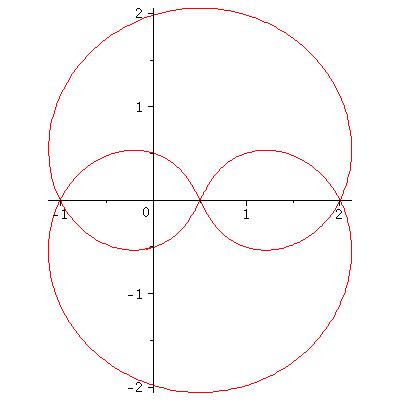
Now I have a true (canonical) shape of this curve: the hyperbolic geodesic in the twice punctured plane (at 0 and 1) in the free homotopy class of the commutator of the loops around punctures:

As I learned on Math Overflow, the author of this problem is M. Spivak, who published it in "Quantum" magazine, in the department Problems for little children. (Quantum was a short-lived English counterpart of the Russian Kvant magazine). See comments to my answer to this question: Teaching the fundamental group via everyday examples. My own experience with this problem shows that children of the age 5-10 usually need less time to solve this problem then advanced mathematicians. Once I explained it at the dinner table in a Low Dimensional topology conference, and briefly explained the solution. Some people were not convinced until we verified this experimentally. A better known example of a non-commutative group is the rotation group SO(3). That is is not simply connected is very nicely experimentally demontrated by Dirac's belt trick.